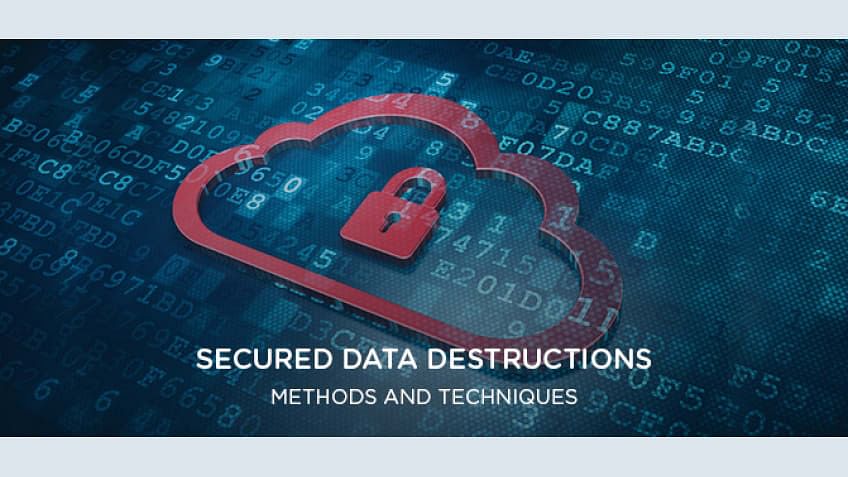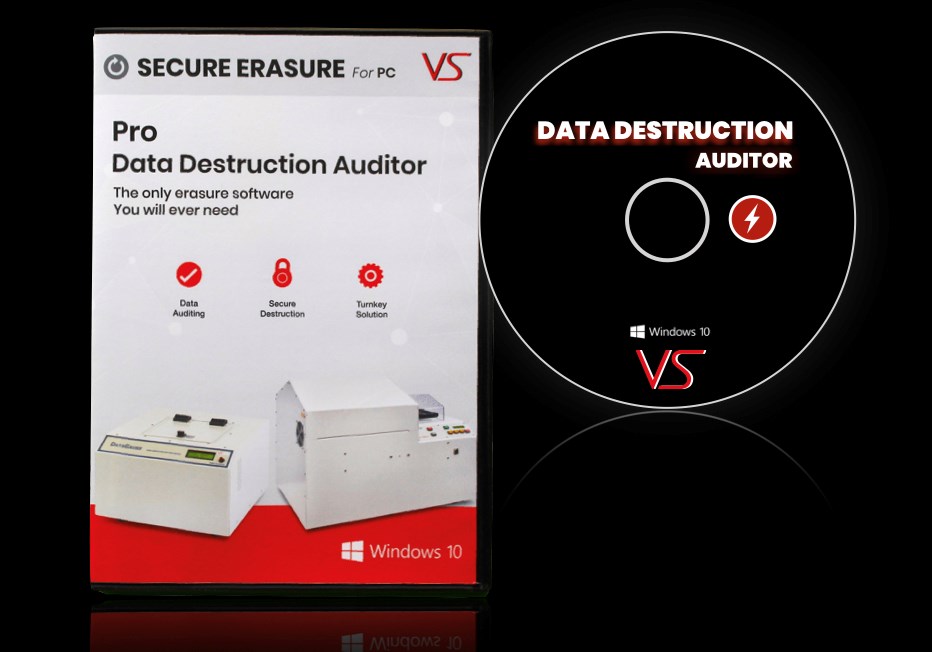Checking Out the Value of Information Devastation in the Context of Computer Safety And Security Providers and Protecting Confidential Information
In a period where data violations are significantly typical, the significance of effective information destruction can not be overemphasized. When no longer required, Organizations must embrace rigid steps to guarantee that sensitive info is not only protected throughout its lifecycle yet additionally emphatically eradicated. The techniques used for information obliteration, combined with conformity to legal criteria, play a pivotal function in keeping discretion and count on. Nonetheless, the effects of these techniques expand beyond mere compliance, affecting a firm's reputation and operational honesty in the digital market. What strategies can companies apply to improve their information damage procedures?
Recognizing Data Devastation
Information devastation is a vital element of computer system protection that entails the irreversible removal of data from storage devices to stop unauthorized access and prospective information violations. In a progressively digital landscape, companies encounter heightened risks linked with sensitive info being improperly accessed or made use of. Reliable information destruction safeguards against these threats, ensuring that personal dataâEUR" such as client info, intellectual residential or commercial property, and monetary recordsâEUR" can not be recouped after disposal.
Recognizing the importance of information damage extends beyond plain compliance with regulatory and legal structures; it is essential for keeping organizational integrity and trust fund. When information is incorrectly handled or inadequately damaged, the effects can be serious, consisting of monetary loss, reputational damages, and lawful responsibilities.

Methods of Information Removal

One common technique is information cleaning, which entails overwriting existing data with random patterns several times. This strategy renders the initial data irretrievable, making it a popular selection for organizations seeking to shield secret information.
One more technique is degaussing, which makes use of an effective electromagnetic field to interrupt the magnetic domains on storage space tools, successfully eliminating the data. This method is particularly effective for magnetic media but is not appropriate to solid-state drives.
Physical destruction is another durable approach, including the shredding or squashing of storage devices. This technique assurances that information recuperation is basically difficult, making it perfect for extremely sensitive info.
Last but not least, security can serve as a complementary approach to information elimination. By encrypting information prior to deletion, companies can include an additional layer of protection, making certain that also if remnants are recuperated, they stay unattainable without the decryption key. Each technique should be chosen based upon the degree of information sensitivity and the particular safety needs of the organization.
Legal Conformity and Data Safety
Organizations have to navigate a complicated landscape of lawful demands connected to data safety and security, specifically after implementing methods of information eradication. Various policies, such as the basics General Data Protection Regulation (GDPR) and the Wellness Insurance Policy Portability and Responsibility Act (HIPAA), impose strict guidelines on just how organizations need to take care of and dispose of delicate data. Failure to comply with these laws can result in significant legal effects, including considerable penalties and reputational damages.
Data damage processes should be carefully documented to demonstrate conformity with applicable regulations and standards. This paperwork not just acts as evidence of adherence to legal responsibilities yet likewise shows a commitment to securing delicate information. Organizations must also his response establish clear plans concerning information retention and damage timelines, ensuring that data is not held longer than needed.

Additionally, regular audits and analyses of data damage practices are vital to preserve conformity and adapt to evolving legal frameworks (data destruction). By proactively dealing with lawful demands, organizations can mitigate risks related to information breaches and show their commitment to data protection. Ultimately, focusing on legal compliance in information devastation processes is not just a regulative responsibility, however a basic facet of a robust information security technique
Effect On Company Track Record
The online reputation of an organization can be dramatically influenced by its method to information destruction and monitoring. In today's electronic landscape, where data breaches can occur anytime, the failure to properly throw away delicate details can result in extreme repercussions. Organizations that inadequately manage data destruction threat revealing confidential client info, which not only breaches privacy laws but additionally deteriorates count on among clients and stakeholders.
A damaged reputation can cause reduced customer loyalty, as customers end up being hesitant to engage with a service that has shown oversight in shielding their data. Furthermore, unfavorable attention bordering a data violation can have an enduring result, as prospective consumers could be prevented by the perceived lack of safety and security. This can result in a straight decline in earnings and market share.
Additionally, companies that focus on data devastation as part of their safety technique can boost their online reputation by showcasing their dedication to securing sensitive info. By embracing stringent information monitoring techniques, companies can not just alleviate risks however likewise place themselves as reliable entities in their corresponding sectors, therefore enhancing their overall brand name image.

Best Practices for Secure Disposal
Executing ideal techniques for protected disposal of information is essential for reducing risks connected with information violations and guaranteeing conformity with personal privacy policies. Organizations should take on a thorough data disposal plan that details procedures for both physical and digital information devastation.
For physical information storage space tools, such as hard disks, shredding or degaussing is recommended to stop data recovery. In addition, companies need to keep a chain of safekeeping paperwork throughout the disposal process, guaranteeing accountability and traceability of disposed items.
For electronic information, utilizing software application that abides by industry criteria for information wiping is essential. This software application needs to overwrite existing data multiple times, making recovery virtually impossible. It is likewise crucial to confirm the performance of the data damage process through audits or third-party evaluations.
Educating staff members on protected disposal methods includes an additional layer of safety, as human error can often cause information exposure. Routinely updating and examining disposal policies makes certain placement with progressing laws and technical click advancements. By implementing these ideal practices, organizations can dramatically lower the danger of unapproved data accessibility and improve their general data protection method.
Conclusion
Finally, data devastation is a fundamental element of computer system safety and security solutions that guarantees the security of secret information from unauthorized access. Carrying out efficient approaches of information elimination, adhering to legal conformity, and recognizing the effect on service track record are important components of a detailed information safety and security technique. By adopting best practices for safe and secure disposal, organizations can promote count on with clients and protect sensitive information, eventually contributing to an extra protected digital landscape.
In a period where data violations are progressively common, the significance of reliable information destruction can not be overstated.Data damage is a crucial component of computer system safety and security that entails the irreversible elimination of information from storage devices to protect against unauthorized gain access to and possible information breaches. Organizations must additionally develop clear plans pertaining to data retention and destruction timelines, ensuring that information is not held longer than necessary.
By proactively addressing legal needs, organizations can reduce threats associated with information breaches and show their commitment to data security (data destruction). Eventually, prioritizing legal compliance in data devastation processes is not simply a regulative responsibility, but a fundamental facet of a durable information safety approach